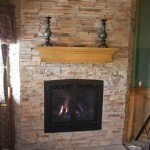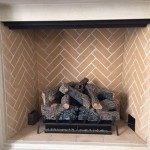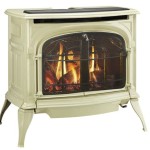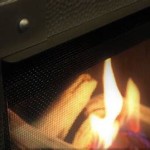Gas Fireplace Fumes: Understanding the Importance of Proper Venting
Gas fireplaces offer a convenient and aesthetically pleasing alternative to traditional wood-burning fireplaces. They provide warmth with the flick of a switch, eliminating the need for wood storage and the mess associated with burning solid fuel. However, like any combustion appliance, gas fireplaces produce exhaust gases. Proper venting is paramount to ensure these gases, containing potentially harmful substances, are safely removed from the living space. This article will explore the composition of these fumes, the dangers associated with inadequate venting, and the different venting systems used for gas fireplaces.
Composition of Gas Fireplace Fumes
The primary fuel source for most gas fireplaces is natural gas or propane. When these fuels burn, they ideally produce carbon dioxide (CO2) and water vapor (H2O). However, complete combustion is rarely achieved in a real-world scenario. Several other compounds can be present in the exhaust, albeit in smaller quantities. The exact composition of the fumes will depend on several factors, including the quality of the fuel, the fireplace's design, and the efficiency of the combustion process.
A significant byproduct of incomplete combustion is carbon monoxide (CO). This colorless, odorless, and tasteless gas is extremely dangerous. It interferes with the oxygen-carrying capacity of the blood, leading to potentially severe health consequences, including brain damage and death. Even low levels of CO exposure over extended periods can cause flu-like symptoms, such as headaches, dizziness, and nausea.
Other potential components of gas fireplace fumes include nitrogen oxides (NOx), which can contribute to respiratory irritation and smog formation. Sulfur dioxide (SO2) may also be present, particularly if the gas contains sulfur impurities. While typically found in trace amounts in well-maintained systems using clean fuel, these gases can exacerbate respiratory problems and contribute to environmental pollution.
Particulate matter (PM), although less prevalent in gas fireplaces than in wood-burning stoves, can still be present in the exhaust. PM consists of fine particles that can penetrate deep into the lungs, causing respiratory issues and cardiovascular problems, especially for vulnerable populations such as children and the elderly.
Finally, unburned hydrocarbons, remnants of the fuel that did not fully combust, can also be released into the atmosphere. These compounds contribute to air pollution and can have adverse health effects.
Given the potentially harmful nature of these components, proper venting is essential for directing them safely away from the living area and into the outside environment.
Dangers of Inadequate Venting
The absence of proper venting, or a malfunctioning venting system, poses significant health risks. The most immediate and severe danger is carbon monoxide poisoning. Since CO is undetectable by human senses, it can accumulate rapidly in enclosed spaces, leading to unconsciousness and death within a short period. Symptoms of CO poisoning can easily be mistaken for the flu, delaying diagnosis and treatment, further increasing the risk of severe complications.
Longer-term exposure to even low levels of carbon monoxide can cause chronic health problems. Neurological damage, affecting memory, concentration, and coordination, can result from prolonged CO exposure. Cardiovascular issues, such as an increased risk of heart attacks and strokes, have also been linked to chronic CO poisoning.
Apart from the risk of CO poisoning, inadequate venting can lead to a buildup of other harmful gases, such as nitrogen oxides and sulfur dioxide. These gases can irritate the respiratory system, causing coughing, wheezing, and shortness of breath. Individuals with pre-existing respiratory conditions, such as asthma or chronic obstructive pulmonary disease (COPD), are particularly vulnerable to the effects of these gases.
Furthermore, the accumulation of moisture resulting from poor venting, particularly in conjunction with other combustion byproducts, can create an environment conducive to mold growth. Mold can trigger allergic reactions and respiratory problems, further compromising indoor air quality.
Beyond the immediate health risks, inadequate venting can also damage the structure of the building. Moisture condensation within the walls and ceilings can lead to rot and decay, compromising the structural integrity of the building over time. Additionally, the corrosive nature of some exhaust gases can damage components of the fireplace and venting system, leading to costly repairs.
For these reasons, regular inspection and maintenance of the venting system are crucial to ensure its proper functioning and prevent the buildup of harmful gases inside the home.
Types of Gas Fireplace Venting Systems
Various venting systems are used for gas fireplaces, each with its own characteristics and applications. The appropriate venting system depends on factors such as the type of fireplace, the location within the building, and local building codes. Understanding the different types of venting systems is essential for ensuring safe and effective exhaust removal.
Direct Vent Systems: Direct vent fireplaces are sealed combustion appliances, meaning they draw combustion air from outside the building and vent exhaust gases directly to the exterior. These systems typically utilize a dual-walled vent, with one channel drawing in fresh air and the other expelling exhaust. Direct vent systems are considered among the safest and most efficient, as they minimize the risk of backdrafting and do not rely on indoor air for combustion.
Direct vent systems can be vented horizontally through a wall or vertically through the roof, offering flexibility in installation. They are also suitable for installation in areas where traditional chimney access is not available. The sealed combustion chamber and direct venting minimize the risk of indoor air quality issues, making them a popular choice for modern homes.
B-Vent Systems: B-vent fireplaces, also known as natural vent fireplaces, rely on natural convection to exhaust gases through a vertical vent that connects to a chimney. These systems draw combustion air from within the room, which can negatively impact indoor air quality if the fireplace is not properly installed or maintained. They require a continuous, unobstructed vent path to the outside and are typically used when an existing chimney is available.
B-vent systems are more susceptible to backdrafting than direct vent systems, especially in tightly sealed homes with negative pressure. Backdrafting occurs when the airflow reverses, drawing exhaust gases back into the living space. Regular inspection and maintenance of the chimney and vent are crucial to prevent backdrafting and ensure proper venting.
Vent-Free Systems: Vent-free gas fireplaces, also known as ventless fireplaces, do not require any venting system. They burn gas very efficiently, producing minimal exhaust gases. However, concerns remain about their impact on indoor air quality, particularly regarding the potential buildup of carbon monoxide and other combustion byproducts. Many jurisdictions have restrictions or outright bans on vent-free fireplaces due to these concerns.
While vent-free fireplaces are equipped with oxygen depletion sensors (ODS) to shut off the gas supply if oxygen levels fall too low, these sensors are not foolproof. Regular monitoring of carbon monoxide levels is crucial when using a vent-free fireplace. These systems should only be used as supplemental heat sources in well-ventilated spaces and should never be used as the primary heating source.
Power Vent Systems: Power vent systems are used when a traditional vent system cannot be installed due to physical constraints or building codes. These systems use a fan to force exhaust gases through a vent pipe, allowing for longer and more complex vent runs. Power vent systems can be used with both direct vent and B-vent fireplaces, providing greater flexibility in installation.
Power vent systems require a reliable power supply to operate the fan. Regular maintenance of the fan is important to ensure its proper functioning. If the fan fails, the fireplace will not vent properly, posing a risk of carbon monoxide poisoning.
Selecting the appropriate venting system is a crucial decision that should be made in consultation with a qualified HVAC professional or fireplace installer. Factors such as building codes, the type of fireplace, and the location within the building should all be considered to ensure a safe and efficient installation.
Regardless of the type of venting system used, regular inspection and maintenance are essential to ensure its proper functioning. This includes checking for obstructions, leaks, and corrosion, as well as ensuring that the vent cap is properly installed and free from debris. A qualified technician should inspect the venting system annually to identify and address any potential issues before they become safety hazards.

Vented Vs B Vent Direct Free Dixie S

What Are The Best Ways To Vent A Gas Fireplace Zoroast

What Are Direct Vent Gas Fireplaces Admiral Propane

Everything You Need To Know About Gas Fireplaces Energy Trust Of Oregon

4 Types Of Gas Fireplace Venting Options G B Energy

What You Need To Know About Gas Fireplace Black Soot
Pier Three Sided Gas Fireplace Heatilator

Do Gas Fireplaces Need A Chimney Dreifuss

If You Have A Gas Fireplace It May Or Not Chimney Flue

Workings Of A Fireplace Royal Oak Mi Fireside Hearth Home
Related Posts








